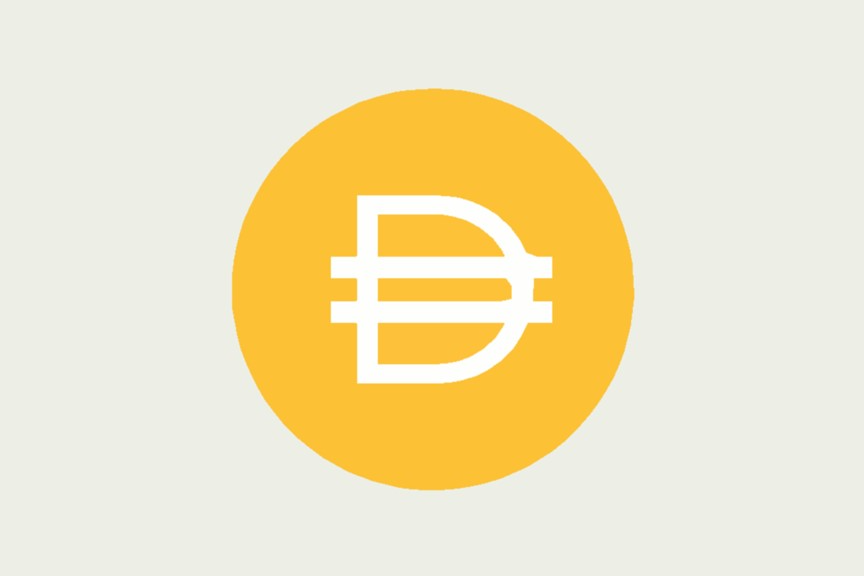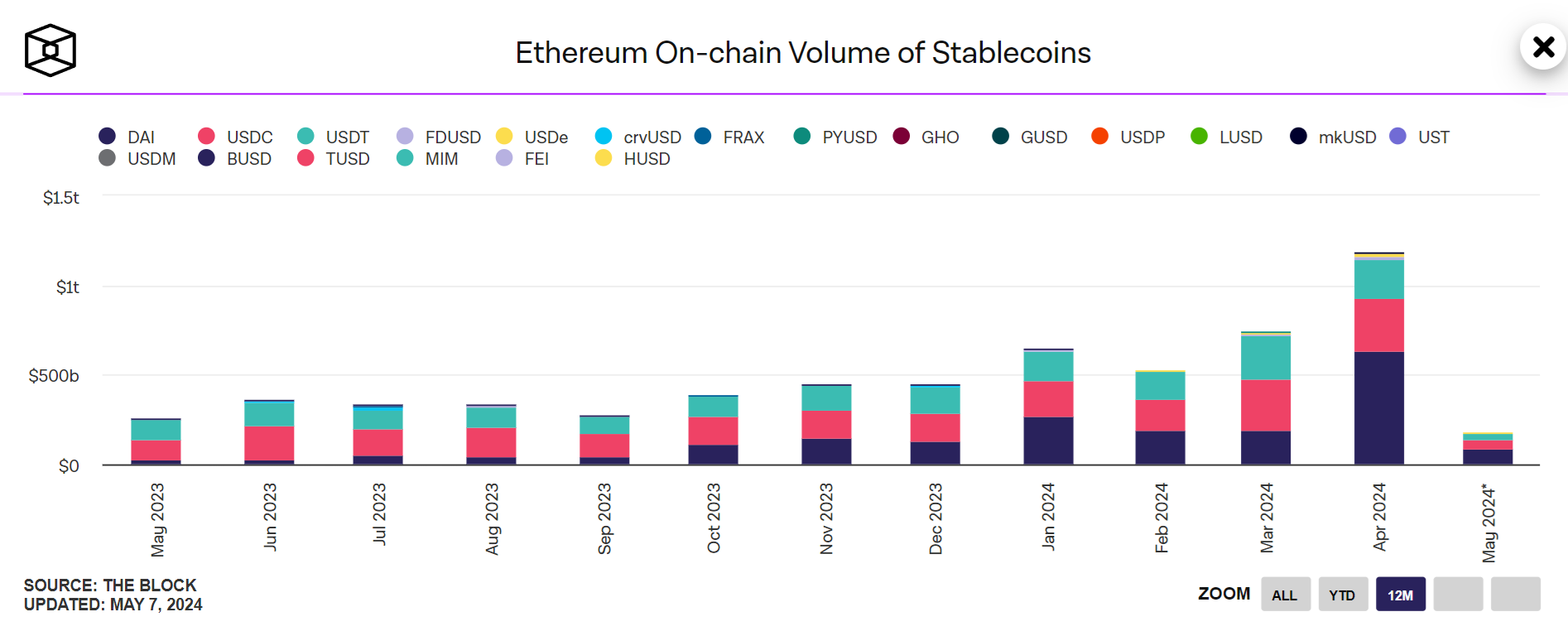2024-05-07

DAI is a decentralized stablecoin. It the third largest stablecoin
by market cap after USDT and USDC.
Dai monthly trading volume
May 2023- $23.61 billion
June 2023 - $29.41 billion
July 2023 - $53.67 billion
August 2023 - $43.99 billion
September 2023 - $44.13 billion
October 2023 - $111.99 billion
November 2023 - $151.15 billion
December 2023 - $131 billion
January 2024 - $270.83 billon
February 2024 - $194.59 billion
Mar 2024 - $187.89 billion
April 2024 - $636.72 billion

Ethereum On-chain Volume of Stablecoins (theblock.co)
DAI is the fastest growing stablecoin on Ethereum by trading volume
in April 2024
The increase in DAI’s trading volume come from flash loan activity.
Aave, Compound, and Binance offer flash loans.
What is DAI stablecoin?
Users can generate DAI by depositing
collateral assets into Maker Vaults within the Maker Protocol. This process
involves overcollateralization, ensuring that the value of DAI is backed by a
surplus of assets, which provides a buffer against market volatility.
The system is governed by MakerDAO, a
decentralized autonomous organization where decisions are made by MKR token
holders.
They vote on proposals affecting the
Maker Protocol's smart contracts, influencing factors like accepted collateral
types, collateralization ratios, and interest rates.
The MakerDAO community governs the
Maker Protocol by holding and voting with MKR tokens, which are also part of
the ecosystem. MKR token holders have the authority to propose and vote on
changes to the protocol, such as adjusting the stability fee, which is a sort
of interest rate charged on Dai generated against collateral, or adding new
types of collateral that can be used to generate Dai.
The stability of DAI's value is crucial
for its function in decentralized finance, where it's used for lending,
borrowing, and as a medium of exchange. Its design aims to offer the benefits
of digital currency without the typical volatility associated with
cryptocurrencies.
Dai stands out in the cryptocurrency
world due to its decentralized nature and the absence of a central authority
controlling its issuance. This makes it a key component of the decentralized
finance (DeFi) movement, which aims to create an open financial system
accessible to anyone.